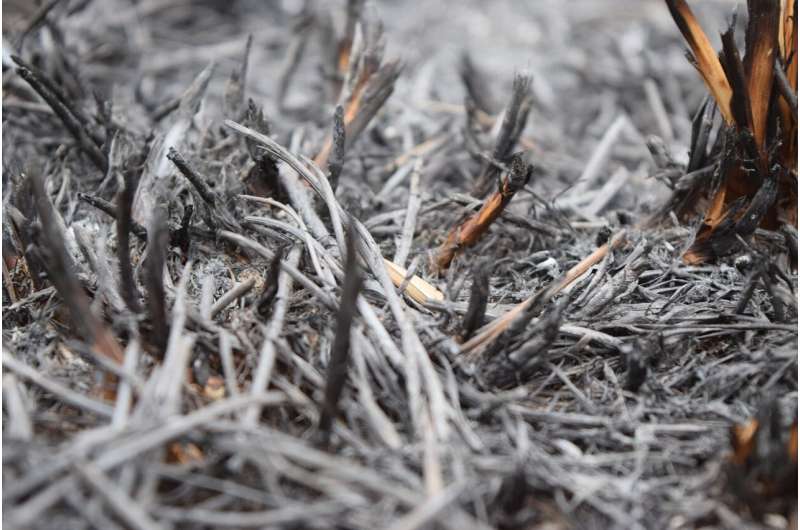This article has been reviewed according to Science X's editorial process and policies. Editors have highlighted the following attributes while ensuring the content's credibility:
fact-checked
peer-reviewed publication
trusted source
proofread
New study shows increasing fire frequency threatens ecosystem stability

A new study by researchers at The Australian National University (ANU) and Curtin University has shown a major increase in fire frequency in Victoria in the 20 years from 2001 to 2020 relative to the two decades prior (1980 to 2000).
"This surge in fire frequency, particularly pronounced in areas like wetter forest ecosystems dominated by ash-type eucalypts, raises concerns about ecosystem degradation, the high risks of ecosystem collapse, and the viability of native forest logging operations," lead author Professor David Lindenmayer said.
Co-author Adjunct Associate Professor Phil Zylstra from Curtin University added, "The heightened risk of frequent wildfires in logged and regenerated forests compounds the challenge, as these areas remain flammable for several decades post-harvest." The findings have been published in Ecosphere.
Amidst Australia's recognition as one of the most fire-prone regions globally, the findings underscore the need for effective fire management strategies to curb wildfire occurrences.
"While addressing climate change offers a long-term solution, immediate measures include vegetation management practices that reduce flammability, such as curbing logging activities in wood production forests and reconsidering hazard reduction burning in specific vegetation types," co-author Dr. Chris Taylor said.
According to the researchers, the findings show the need for innovative approaches to fire management.
"Embracing new technologies and proactive strategies, like early wildfire detection, holds the potential to mitigate fire impact," Professor Lindenmayer said.
"Early detection could lead to more successful fire containment efforts and foster fire-resilient forest landscapes through ecologically cooperative fire management techniques."
More information: David Lindenmayer et al, What environmental and climatic factors influence multidecadal fire frequency?, Ecosphere (2023). DOI: 10.1002/ecs2.4610
Journal information: Ecosphere
Provided by Australian National University


















